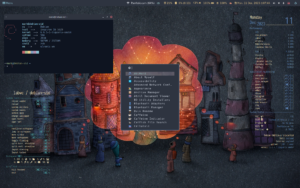How to Install and Set Up FireJail on Arch Linux
What is FireJail?
FireJail is a security sandbox program that uses Linux namespaces and seccomp-bpf to restrict the running environment of untrusted applications. It helps to isolate applications and limit their access to the system, enhancing security.
Step 1: Install FireJail
Open your terminal and run the following command to install FireJail:
sudo pacman -S firejailStep 2: Verify Installation
After installation, you can verify that FireJail is installed correctly by checking its version:
firejail --versionStep 3: Basic Usage
To run an application in a FireJail sandbox, simply prefix the command with firejail. For example, to run Firefox in a sandbox, use:
firejail firefoxStep 4: Using FireJail Profiles
FireJail comes with predefined profiles for many applications. You can view the available profiles in the /etc/firejail directory:
ls /etc/firejailTo run an application with a specific profile, use:
firejail --profile=/etc/firejail/.profile Replace <profile_name> with the desired profile and <application> with the application you want to run.
Step 5: Customizing FireJail
You can create your own custom profiles by copying an existing profile and modifying it. For example:
sudo cp /etc/firejail/firefox.profile ~/.config/firejail/myfirefox.profileEdit the new profile using your preferred text editor:
nano ~/.config/firejail/myfirefox.profileStep 6: Check FireJail Status
To check the status of running FireJail sandboxes, use:
firejail --listConclusion
FireJail is now installed and configured on your Arch Linux system. You can use it to run applications in a secure sandbox environment, enhancing your system’s security.
This content is free to use, adapt, and share.
Knowledge and information should be open—please spread them far and wide.A few things to keep in mind:
- All of my work comes with absolutely no warranty, expressed or implied. However…
- It will almost certainly work until it breaks,
though I must admit it may never work or be useful—and that would be sad.- If/when it breaks, you can keep all the pieces.
- As for what you don’t like, it’s yours to do with as you will.
- If you find my materials helpful, both you and I will be happy (at least for a while).
- My advice is worth every penny you paid for it!
Full disclosure:
I use various AI systems to assist in developing my content.
If you’re curious about how I use them, feel free to check out:
The Revolutionary Impact of AI on Genealogy and Historical Research.


